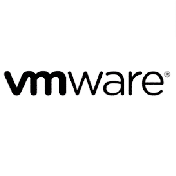Seminarinhalt
Dieses Training bietet eine praktische Schulung, die den Teilnehmer*innen eine Reihe von Fähigkeiten vermittelt: von der Durchführung routinemäßiger VMware vSphere® 8-Verwaltungsaufgaben bis hin zu komplexen vSphere-Operationen und -Konfigurationen. Durch laborgestützte Aktivitäten werden die Teilnehmer*innen in reale Situationen eines fiktiven Unternehmens, VMBeans, versetzt. Diese Situationen machen die Teilnehmer*innen mit realen Szenarien vertraut, mit denen Unternehmen beim Aufbau und der Skalierung ihrer virtuellen Infrastruktur konfrontiert sind.
Dieser Training verwendet szenariobasierte Laborübungen und bietet keine geführten Schritt-für-Schritt-Anleitungen. Um die szenariobasierten Laborübungen abzuschließen, müssen Sie die Aufgabe analysieren, recherchieren und die erforderliche Lösung ableiten. Referenzen und Dokumentationsvorschläge werden zur Verfügung gestellt.
Das Training ist vollständig auf die Prüfungsziele von VMware Certified Advanced Professional - Data Center Virtualization Deploy abgestimmt.
Programm
- 1 Course Introduction
- Introductions and course logistics
- Course objectives
- Creating and Configuring Management Clusters
- Create a vSphere cluster for management workloads
- Activate vSphere cluster features that help to improve resource allocation and availability of virtual machines
- Use standard virtual switches to create networking in a cluster
- Select the appropriate vSphere storage types to meet requirements
- Configure iSCSI storage
- Configure VMFS and NFS datastores
- Recognize when to configure ESXi NTP and PTP support
- Recognize ESXi user account best practices
- Configure ESXi host settings
- Use vSphere configuration profiles to maintain consistent ESXi host configurations
- Creating and Configuring Production Clusters
- Use Cluster Quickstart to create a vSAN-activated cluster
- Configure advanced vSphere HA settings
- Configure the vCenter identity provider
- Assign specific permissions and roles to Active Directory Federation Services (ADFS) users
- Configure Enhanced vMotion Compatibility on a cluster and a VM
- Perform a Cross vCenter Server migration
- Use content libraries to share virtual machine templates between sites
- Manage VM and ESXi host resources using resource pools, scalable shares, and vSphere DRS rules
- Troubleshooting vSphere and Backing UpConfigurations
- Troubleshoot ESXi connectivity issues
- Troubleshoot ESXi storage issues
- Troubleshoot vSphere cluster issues
- Troubleshoot PowerCLI issues
- Generate vCenter and ESXi log bundles
- Back up vCenter
- Create a vCenter profile to standardize configurations in the environment
- Lifecycle Management
- Troubleshoot upgrade-blocking issues
- Increase logging levels on vCenter
- Configure a VMware Tools™ shared repository
- Upgrade vCenter
- Upgrade ESXi
- Upgrade VMware Tools
- Upgrade virtual machine hardware compatibility
- vSphere Security
- Configure a key management server
- Encrypt virtual machines using vSphere VM encryption
- Secure VMs in transit with encrypted vSphere vMotion
- Identify and implement different ESXi CPU scheduler options
- Apply security hardening guidelines to ESXi hosts
- Replace vCenter certificates with trusted CA-signed certificates
- Reconfigure the primary network identifier for a vCenter instance
Zielgruppen
- System administrators
- System engineers
Vorkenntnisse
- VMware vSphere: Install, Configure, Manage
- VMware vSphere: Operate, Scale, and Secure
- Kenntnisse über VMware vSAN™
- Erfahrung in der Systemadministration unter Microsoft Windows- oder Linux-Betriebssystemen



